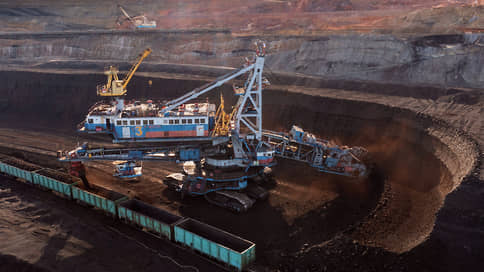Russian coal exports fell in September amid rising prices
[ad_1]

Russia reduced seaborne coal exports in September by 15% compared to August, to 13.1 million tons, which corresponds to the level of September 2022, according to Kpler data. In general, since the beginning of the year, coal exports from Russia have shown an increase of 5%. The main markets remain China, India and Turkey, which reduced purchases in September. Imports were reduced most significantly by India, which is increasing its domestic production and has less need for coal ahead of the rainy season. In addition, the reduction in discounts on Russian coal makes it less attractive compared to alternatives.
In September, Russia exported 13.1 million tons of coal by sea, which is 15.4% less than in August, according to Kpler data, which Kommersant reviewed. In September 2022, the export volume was similar, but then only the European embargo that came into force affected supplies. Despite the decline in September, at the end of nine months of 2023, Russian coal exports increased by 5%, to 135 million tons.
In September, all major consumers reduced purchases of Russian coal. Sea exports to China decreased by 30%, to 4.7 million tons, to Turkey – by 7.5%, to 1.8 million tons, and exports to India fell three times, to 513 thousand tons. According to the Indian consulting agency Coalmint, in general, India in September reduced purchases of coking coal by 8% compared to August and by 11% compared to September 2022 – to 4.2 million tons. India’s imports of thermal coal in September compared to August increased by 24%, to 15 million tons. Russia is not the largest supplier of energy coal to India, being significantly inferior in volume to Indonesia and South Africa.
The decline in Russian coal exports to India may be due to an increase in domestic production in the country. India’s coal production grew 12% to 428.31 million tonnes in the first half of FY2024 (April-September 2023), according to Coalmint. According to Platts, Indian consumers reduced demand in the third quarter as they have good coal reserves ahead of the monsoon season. Once completed, demand for power coal typically increases significantly as energy consumption for air conditioning increases.
The pace of Russian coal exports also depends on prices. The reduction in discounts that supported Russian supplies in 2022 is gradually making Russian coal less attractive compared to its peers. In the last week of September, prices for various grades and types of coal from Russia increased by 7.4–12.7% (see Kommersant on October 5). The issue of export profitability has become even more important after the government’s decision to introduce export duties, the amount of which is tied to the ruble exchange rate.
By the end of 2023, the Ministry of Energy expects coal production in Russia to grow by 1.5% and exports by 2%. In 2022, production increased slightly to 443.6 million tons, while coal exports decreased by 7.5% to 210.9 million tons. According to the Central Dispatch Department of the Fuel and Energy Complex, in 2022, coal companies increased sales revenue by 32.8%, to 2.3 trillion rubles, and profit grew only by 9%, to 784 billion rubles.
Based on monthly statistics for 2022 and 2023, it can be noted that 13 million tons is almost the maximum export volume for domestic coal producers, comments Boris Krasnozhenov from Alfa Bank. Thus, the decline in exports in September occurred from a high base. Last year, the expert says, in September, according to the MMI agency, there was also a decrease in coal exports by 1.2 million tons compared to August, but this was followed by an increase of more than 2 million tons per month in October-December.
The analyst believes that Russian coal, taking into account current discounts, remains quite competitive in comparison with coal from other countries. He notes that in addition to traditional buyers, supplies of Russian coal to new markets are growing, including Latin America (Mexico and Argentina), the Middle East and Southeast Asia (Sri Lanka).
[ad_2]
Source link





